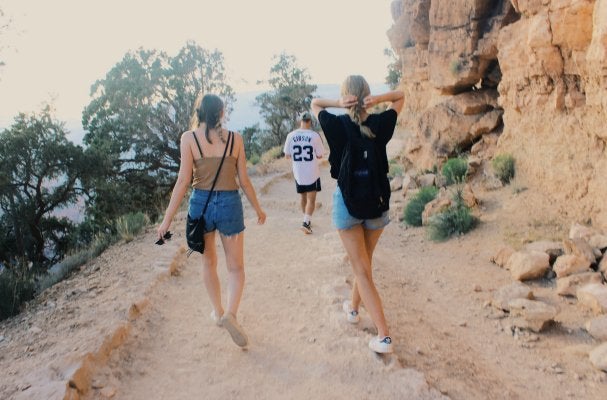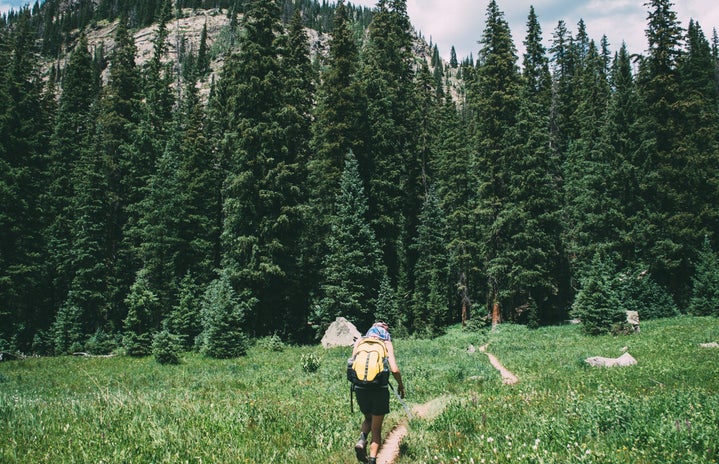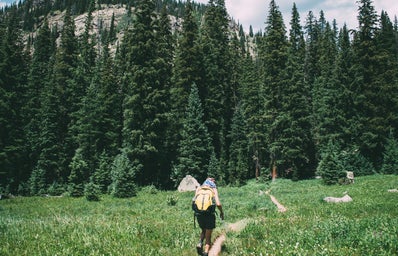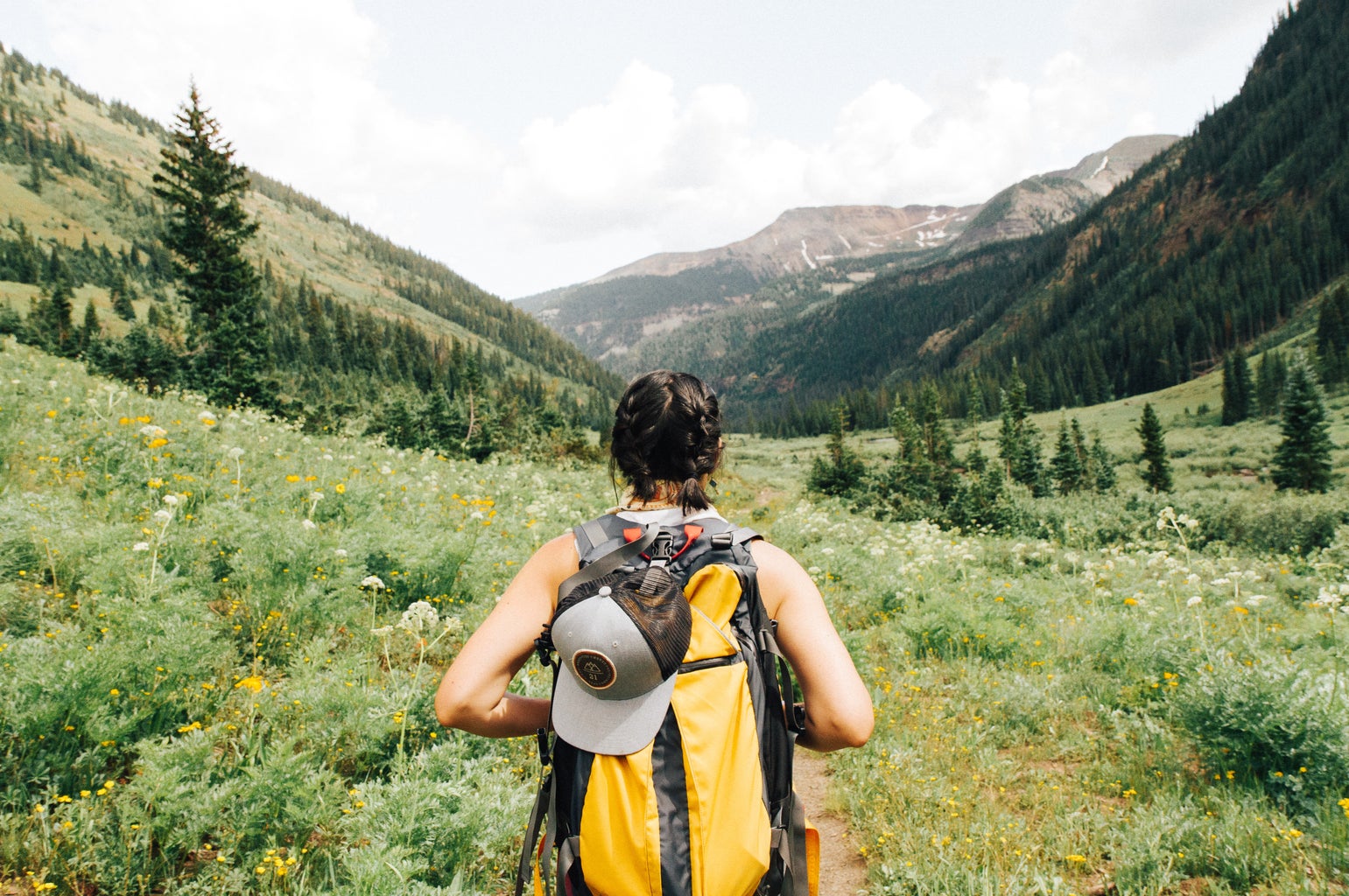CU Boulder students, you’ve been in Boulder for almost a month now, which means it is impossible for you to not have noticed the beautiful mountain backdrop in every view on campus. Besides being the most Instagram-able view in the world, hiking in Boulder is a perfect way to build confidence, meet new people, and get a unique and stress-free workout in. Getting into hiking can be pretty terrifying, though, so here are some quick tips on how to seem like a pro your first time at Chautauqua.
Getting into Gear
Getting gear for hiking can be really intimidating and pricey, especially in a place like Boulder. Luckily, you aren’t necessarily required to get all the fancy boots and backpacks right away! For many hikes in Boulder, comfortable tennis shoes with tread are just fine for beginners (and I am definitely not a stranger to hiking in Chacos). That being said, longer and more challenging hikes will definitely be more comfortable (and safer!) with proper boots. Although I recommend you try the boots on before buying, sites like Out&Back and Patagonia WornWear can get you some quality hiking attire without breaking the bank. Luckily for you, the most important thing you need to have for hiking is water, and that’s free. Overall, it’s all about what level of hiking you want to do, and it’s always best to read about trail conditions online beforehand.
Start With the Classics
It’s pretty hard to avoid hiking recommendations from Boulder students, and trying to remember trail names can be overwhelming, to say the least. The most “cliché” (but still beautiful!) hikes are in Chautauqua Park, which is walkable from some parts of campus. I recommend the First and Second Flatirons Loop trail for a slightly less touristy first hike that will get you a great view of the Flatirons.
The Flatirons Loop can be challenging and definitely makes you feel the altitude, so if you’re an out-of-state student you can also try the Foothills Trail for a flat, but scenic, beginner trail. It is a little farther from campus but a really good way to get into hiking without the daunting mountains right away. Also, there is a clearly marked turnoff for a little incline and some higher views if you’re feeling adventurous.
A personal favorite for a quick but moderate hike is the Skunk Canyon Trail off the Kohler Mesa Loop. Not only is it absolutely breathtaking, but it is heavily used by dog owners and chances are you will always see a happy pup on the trail. It has plenty of shade as well, a definite must for anyone looking to beat the heat!
Use your Resources
Access to so many hiking trails can be found easily with the app AllTrails, which describes every trail with mileage, difficulty rankings, and reviews from other hikers. It is notorious for getting mileage off, though, so I would download an offline version of the area you are hiking in on GoogleMaps as well. If you’re looking to be a little more technical with your routes, try Gaia GPS.
Find A Community
Although I am an avid supporter of solo hikes, it’s always fun to have a group of people to hike with, or even just talk about hiking with! CU, of course, has its own hiking club that you can easily get involved in. As their website states, the club is for “casual hikers to advanced backpackers,” so beginner hikers are welcome!
If you’re looking for a larger community of hikers, the Facebook group “OutdoorsyGals” is a community for women of all ages to come together on a statewide, regional, or global level to discuss all things outdoors. You’ll also occasionally see a hiking trip planned with women who know each other from the group. Anything from trail recommendations, gear questions, or safety tips can be found in this Facebook group, and it’s a super welcoming way to meet experienced hikers. I have learned so many tips from these gals and recommend joining (it’s free!) to almost everyone I meet.

Stay Safe
Hiking alone, especially as a woman, may not always be the safest choice. When possible, beginner hikers should definitely try to be with at least one other person, not only for identifying trailheads and reading maps.
Statistically, you are more likely to be hurt on a drive to a trailhead than on the hike itself, but it is so important to be prepared. Text a trusted friend or family member where you are hiking and how long it should take (and turn on location sharing if your service allows). Know the trail and have an offline version of the map downloaded. For the (again, very low) potential of dangerous people on the trail, I always have pepper spray and a pocket knife on me, as well as a rehearsed fake phone call about how “I will meet (someone) at the end of the trail.” I’ve never had to use any of these, but as a woman, it is crucial to have the possibility of an unwanted encounter in the back of your mind at all times.
As for wild animals, they are going to want to avoid you even more than you want to avoid them. Purchase a bell to attach to your backpack to make it known to wildlife that you’re around or play some music out loud (but not so loud you distract other hikers). Purchase bear spray if recommended for a trail as well. Overall, the key to trail safety is to be aware of your surroundings and to trust your instinct. No one will ever judge you for turning around early on a solo hike. The self-confidence and mental calm you get from being alone in nature cannot be understated!
Have Fun!
Although it can be a strenuous workout, hiking is supposed to be fun! Build a fire hiking playlist (here’s one to get you started), find some yummy trail snacks (Trader Joe’s will always have your back), and take an obnoxious amount of pictures. Boulder is the perfect place to get into hiking, so go enjoy the Flatirons!



